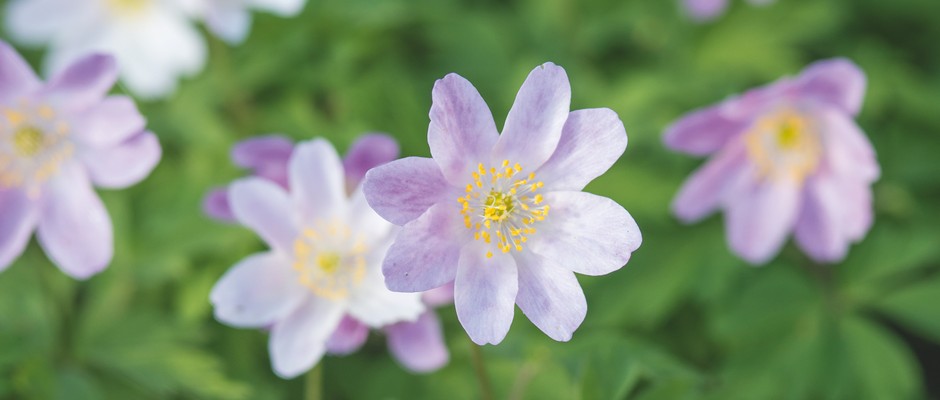
March flowers: the best flowers for March
Plantswoman Fleur van Zonneveld chooses ten plants that help brighten the lengthening days of March. Photos by Maayke De Ridder
March is an exciting time of the garden. The month marks the start of spring and new beginnings and there's nothing quite as special as seeing the first crocus poke through the grass after months of brown and grey.
Now is the time to start thinking about plants that will banish the memories of winter and help to brighten the lengthening days of early spring.
Here is a recommended list of spring plants to brighten the garden in March, chosen by plant expert Fleur van Zonneveld, who runs plant nursery De Kleine Plantage in the Netherlands.
Here's more on gardening jobs in March, gardens to visit in March and what to plant this month.
The best March flowers
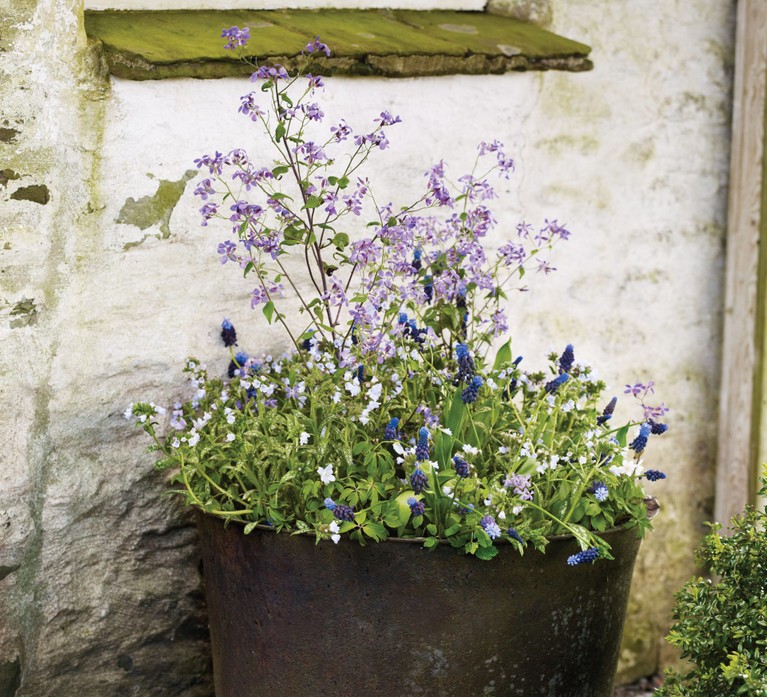
Salix gracilistyla 'Mount Aso'
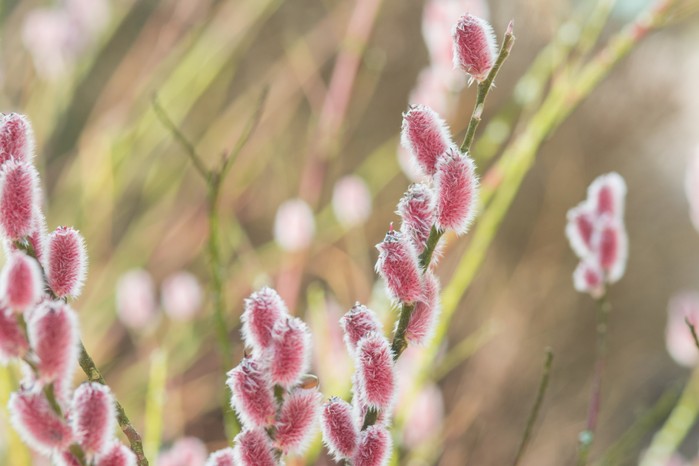
This early blooming pussy willow has exquisitely beautiful, red-purple catkins that over time fade to a silky pink. Once flowering has finished the shrub has attractive leaves that have a slight blue shine. It was selected by a Japanese cut flower grower and the cut branches retain their catkins for ages – even without water. It's relatively easy to grow and is little troubled by disease, although the flowers are sterile, so you can't grow it from seed. It flourishes in spring best on young wood, so prune it firmly each year.
Height 2m. Origin China, Japan, Korea. Growing conditions Well-drained soil, full sun or part shade. Hardiness RHS H7, USDA 4B-8B. Season of interest Late winter to early spring.
Anemone nemorosa 'Kentish Pink'
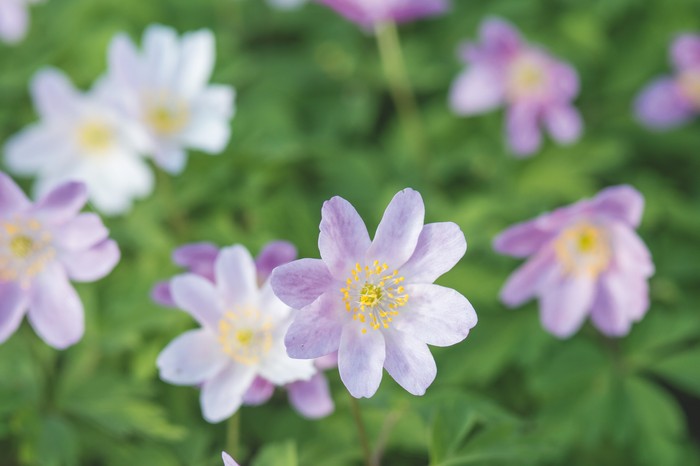
I’m always amazed that Anemone nemorosa doesn’t generate the same levels of excitement as snowdrops. These wood anemone offer far more variation – the Austrian breeder Christian Kress has a collection of 140 types – and naturalise well. This cultivar is almost white but the backs of the petal-like sepals are pink, so in full sun it looks like a typical, white wood anemone, but when light is low, and the spring flowers start to close, its appearance changes completely. In some lights the flowers can appear dark pink.
Height 20cm. Origin Western Europe. Conditions Well-drained, humus-rich soil; part shade. Hardiness RHS H6, USDA 5a-8b. Season Spring.
Fritillaria raddeana
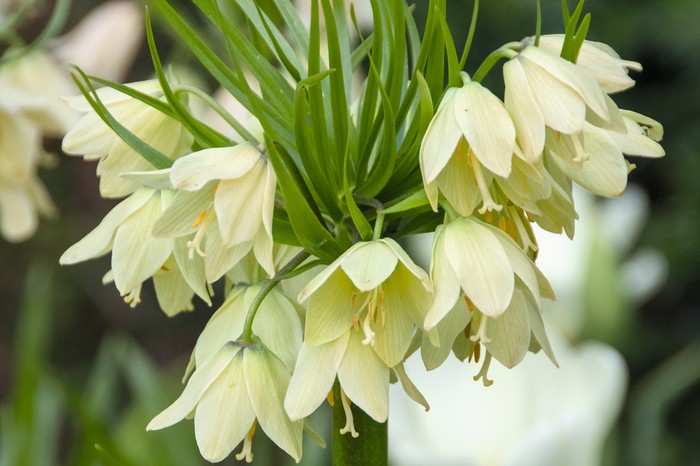
Fritillaries feel like an unstoppable force of nature. You turn away for a couple of days and then suddenly there are numerous new stems with shiny green foliage. This fritillary’s flowers have a beautifully subtle, lime-green colour, which fits perfectly into spring’s colour palette. They’re also large, making this a very striking plant. It is one of the first fritillaries to flower and prefers well-drained soil and hot dry summers. After flowering, it evolves into large, angular seedpods that look wonderful when used in flower arrangements.
Height 70cm. Origin Central Asia. Conditions Well-drained, humus-rich soil; full sun or part shade. Hardiness RHS H7, USDA 5a-8b. Season Spring.
Corydalis nobilis
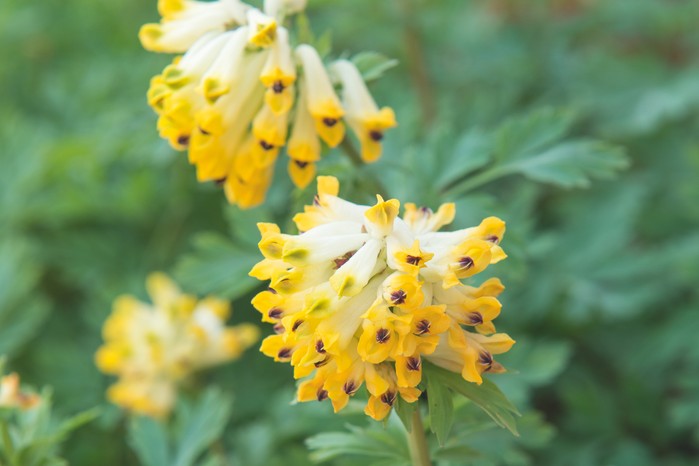
In his book Garden Myths, Robert Pavlis describes how the botanist Carl Linnaeus received some incorrectly labelled seeds that he planted out in his garden. They turned out to be Corydalis nobilis, and from his garden in Sweden the plant has now naturalised all over much of northern Europe. I find this a beautiful story for a beautiful plant. It’s one of the largest corydalis with striking yellow-brown flowers. Most plants need some heat to see a real spurt of growth, but this plant benefits from cold to form up a solid plant. If spring is too warm it slows and collapses. Read more about growing corydalis.
Height 50cm. Origin Altai Mountains and central Asia. Conditions Dry to moderately moist soil; full sun. Hardiness RHS H7, USDA 3b-8b. Season Spring.
Cardamine trifolia

Most cuckoo flowers are deciduous plants; this is the evergreen exception. It forms whole mats of three-lobed, dark-green leaves, but as leaves age their underside fades to purple due to the presence of water-soluble pigments known as anthocyanins. It is a lovely plant that can be used to mask the transition between a path and a border in March. It is also happy in full shade and completely at home under trees especially forming a carpet with a few ferns, such as Osmunda regalis ‘Purpurascens’, in between, or under a group of polygonatums and disporums.
Height 20cm. Origin Southern and central Europe. Conditions Moist, humus-rich soil; full or part shade. Hardiness RHS H5, USDA 7b-9b. Season Spring.
Cornus mas 'Jolico'
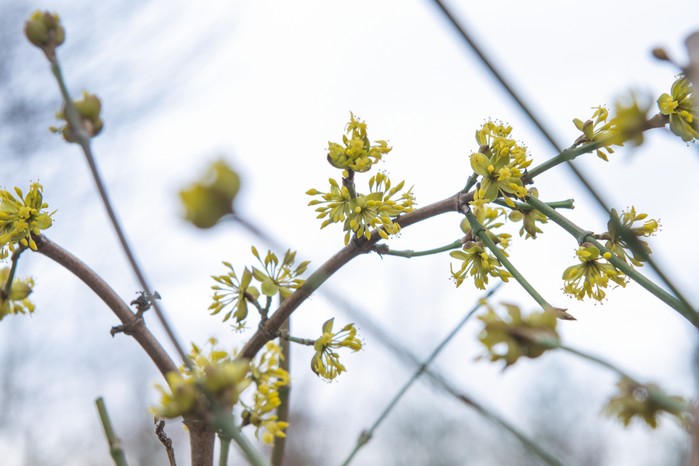
After the greyness of winter, we often crave a little colour. But spring colour is much more welcome if it appears gradually, which is why the subtle beauty of this yellow Cornus mas is so much more appealing than the bright yellow of the ubiquitous forsythias. Cornus mas ‘Jolico’ is an older selection from Vienna and has only recently been rediscovered. Its bloom is richer and more intense than the usual Cornus mas and its dark-red fruits are much bigger – and delicious when turned into a jam. It also has fine autumn colour. AGM*.
Height 4m. Origin Europe, western Asia. Conditions Medium moisture, well-drained soil; full sun or part shade. Hardiness RHS H7, USDA 4a-8b. Season Flowers spring.
Here's more on the best flowering dogwoods
Physochlaina orientalis
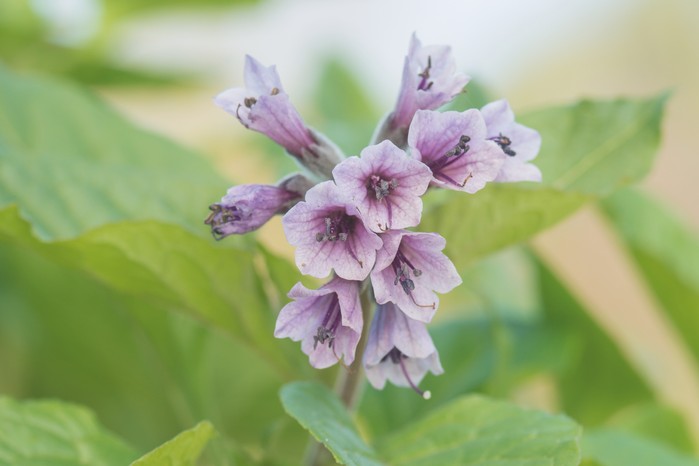
An unusual plant that can be quite hard to source. Its large, triangular leaves held on long stems look a little like those of the American pokeweed, but this comes from the same family as the potato (Solanaceae). It has deep roots so can tolerate quite dry conditions. The plant is also very strong and likes nutritious soil in part shade. Its smoky purple flowers look a little out of place among the fresh colours of most spring plants, and most unusually once the plant has finished blooming, and the bees have taken their fill, the plant disappears. Don’t worry it’s not dead; it is just dormant from summer to spring.
Height 40cm. Origin Caucasus, Turkey, Iran. Conditions Well-drained soil; part shade. Hardiness RHS H7, USDA 3b-11. Season Spring.
Asarum delavayi 'Giant'
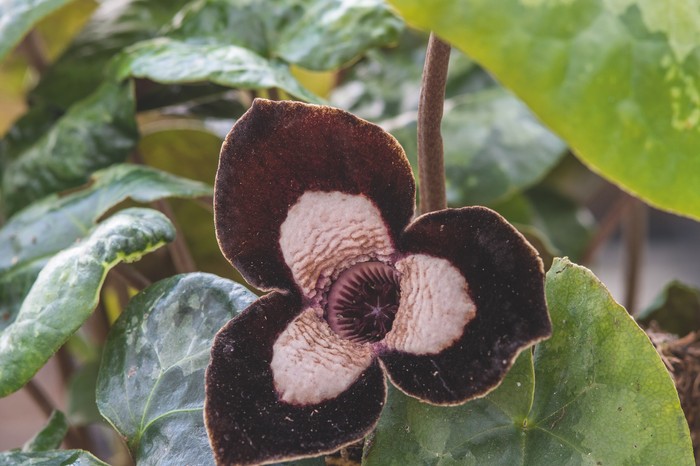
A mysterious-looking plant with beautiful, shiny foliage that is slightly marbled. Look beneath these, evergreen leaves and you’ll find velvety, brown-black flowers with a large white centre looking back at you. No surprise then its common name is panda face wild ginger. The rootstocks are used in Chinese medicine (even though they’re toxic and also carcinogenic). Although slow growing, it makes a beautiful groundcover. Placing it in a pot on an outdoor table is a good way to discourage slugs and the best way to enjoy its incredible flowers.
Height 20cm. Origin China. Conditions Moist but well-drained soil; full sun to part shade. Hardiness RHS H6, USDA 8a-9b. Season Spring.
Puschkinia scilloides var. libanotica
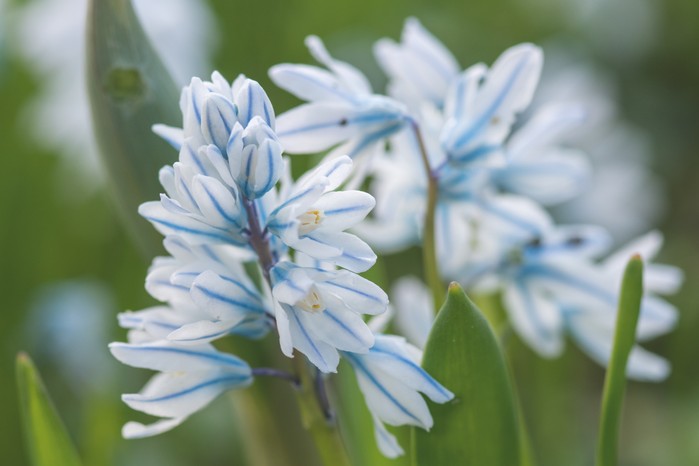
The watery, pale-blue colour of this tiny little plant looks remarkable when massed plantings are viewed from a distance in early spring. Even when the weather is overcast flowers are wide open. It naturalises easily and doesn’t get in the way of later emerging plants. It’s best grown in drifts under deciduous trees or in a border. Plant en masse alongside Chionodoxa forbesii and Primula vulgaris and you will have an eye-catching, colourful spring display.
Height 10cm. Origin Caucasus, Turkey, Iran, Lebanon. Conditions Well-drained soil; full sun or part shade. Hardiness RHS H7, USDA 4a-8b. Season Spring.
Trachystemon orientalis
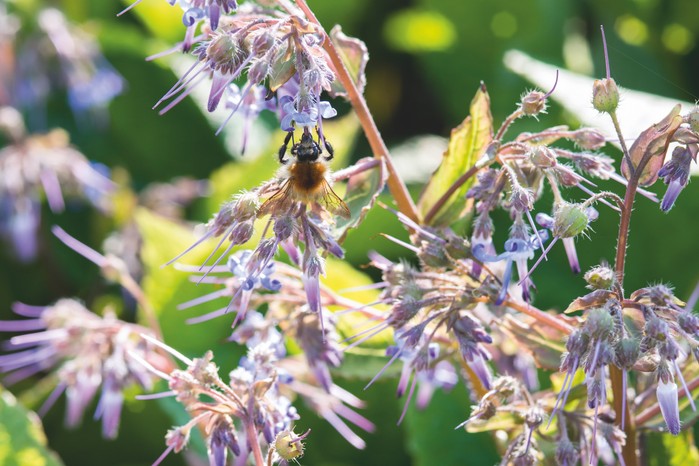
The blue flowers have curled endings on the petals that look like little propellers with a sharp point. Flowers appear before the hairy, heart-shaped, rough leaves that will quickly cover large surfaces making it an excellent groundcover plant and extremely valuable for naturalistic schemes. It needs a moist soil and in drier periods the leaf will quickly hang down. However, it does well in the shade of trees, and can easily be combined with tall plants, such as Polygonatum biflorum and Aralia continentalis. All parts of the plant are edible and often eaten in its native Turkey.
Height 30cm. Origin Eastern Europe, Turkey. Conditions Fresh to moist soil; part to full shade. Hardiness RHS H7, USDA 6a-9b. Season Spring.
You can find more information on plant hardiness ratings here.
Authors
Fleur van Zonneveld is a plant and nurserywoman who owns Nursery de Klein Plantage.

Niwaki bundle worth £57 when you subscribe
Subscribe to Gardens Illustrated magazine and claim your Niwaki bundle worth £57
*UK only

Container Gardening Special Edition
The Gardens Illustrated Guide to Container Gardening.
In this special edition, discover colourful flower combinations and seasonal planting schemes for pots designed by leading plantspeople, and essential know-how for container gardening success. Just £9.99 inc UK p&pBy entering your details, you are agreeing to our terms and conditions and privacy policy. You can unsubscribe at any time.
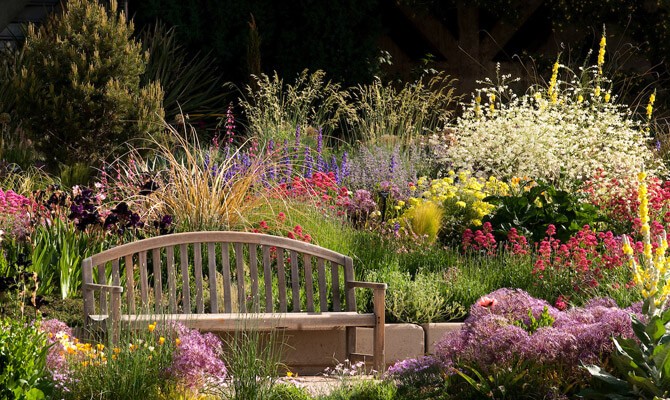
Gardens of the Globe
From botanical wonders in Australia to tranquil havens closer to home in Ireland, let this guide help you to discover some of the most glorious gardens around the world
By entering your details, you are agreeing to our terms and conditions and privacy policy. You can unsubscribe at any time.




